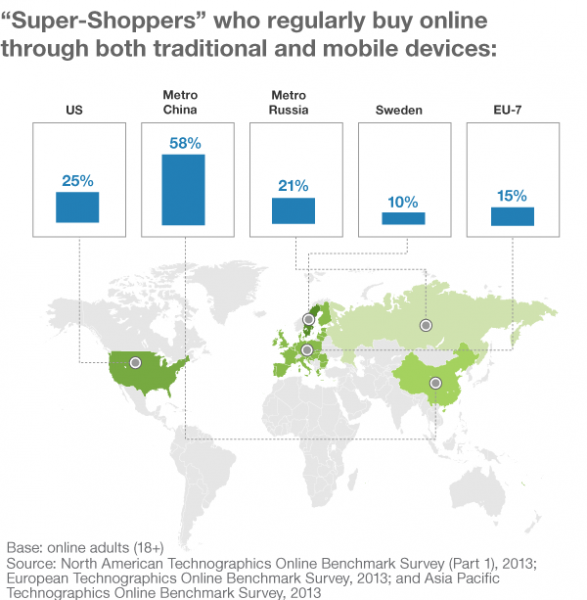The Data Digest: Global Brand, Local Strategy: Forrester’s Global Retail Segmentation Helps To Hone Your Regional Approach
Coffee-lovers just about anywhere around the world are intimately familiar with the sweet feeling of indulging in a Starbucks Frappuccino – but their blended beverages of choice might be starkly unique. Although the Starbucks brand is familiar to consumers worldwide, the taste of a Starbucks beverage varies regionally according to the diversity of palates. Chinese consumers may seek out a Red Bean Green Tea Frappuccino while their Japanese counterparts prefer a Coffee Jelly; Argentinians may count on that Dulce de Leche Granizado Frappucino where Brits treat themselves to a classic Strawberries and Cream.
The Starbucks Frappuccino phenomenon is a metaphor for any global retailer’s optimal international approach. By catering to consumers’ varying tastes, global companies can hone a strategy that is sensitive to diversity — the “art of thinking independently together,” in the words of Malcolm Forbes.
When it comes to eCommerce specifically, consumer tastes differ not only in relation to products but also to purchase methods. According to Forrester’s Consumer Technographics® data, more than half of metropolitan Chinese online adults regularly buy products through both traditional and mobile devices, but only one in four US online adults and even fewer European consumers do this.

In today’s multidevice world marked by ubiquitous Internet connectivity, consumers can interact with retail companies through myriad devices, for multiple reasons, with a range of expectations. When the variation of these behaviors and expectations is magnified by cultural trends across global markets, a retailer’s pursuit of delivering positive experiences in a relevant way becomes more challenging.
Therefore, Forrester recently introduced its Global Retail Segmentation, designed to organize the way in which shoppers around the world engage with companies. Specifically, the segmentation provides an actionable framework for understanding how consumers use various devices when researching and purchasing products. My colleague Martin Gill says that executives “who plan on expanding internationally must understand these nuances and provide localized shopping experiences that go beyond language and currency to tailor touchpoint-specific customer journeys to local markets.” Retailers that strategize according to cultural differentiation give their customers across the world engagement experiences that are as relevant and seamless as picking up their favorite cup of coffee.
